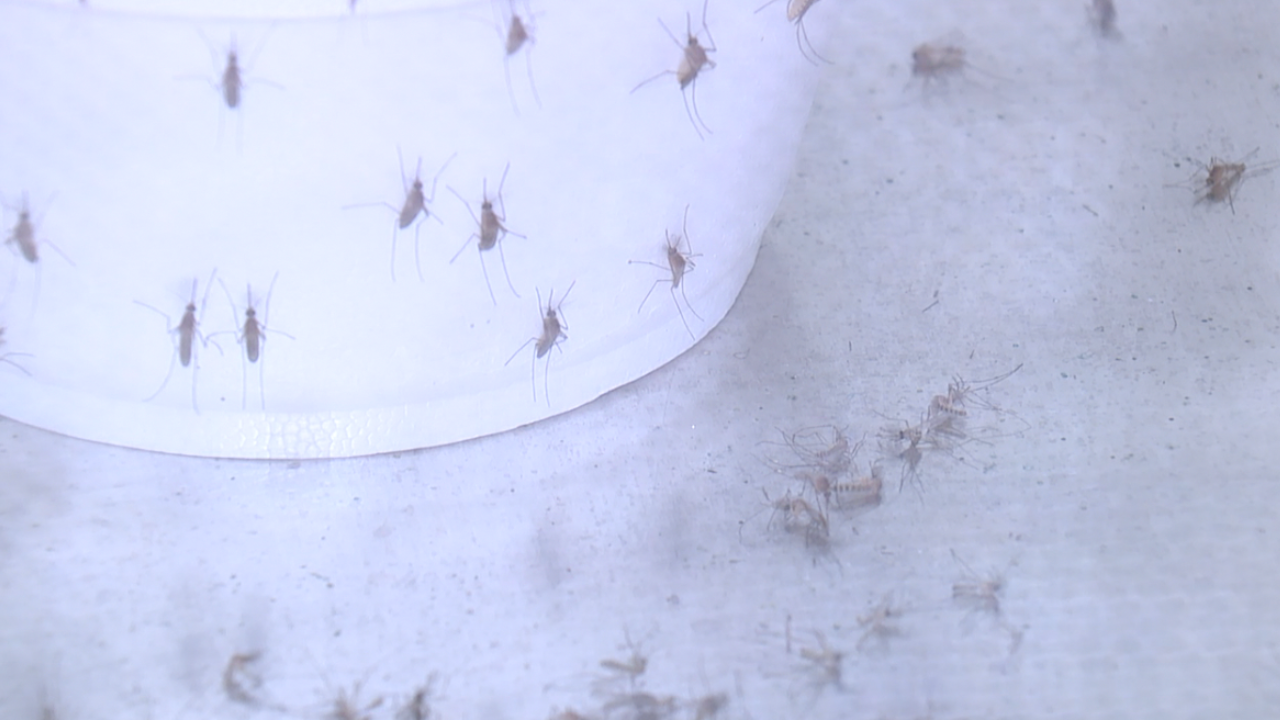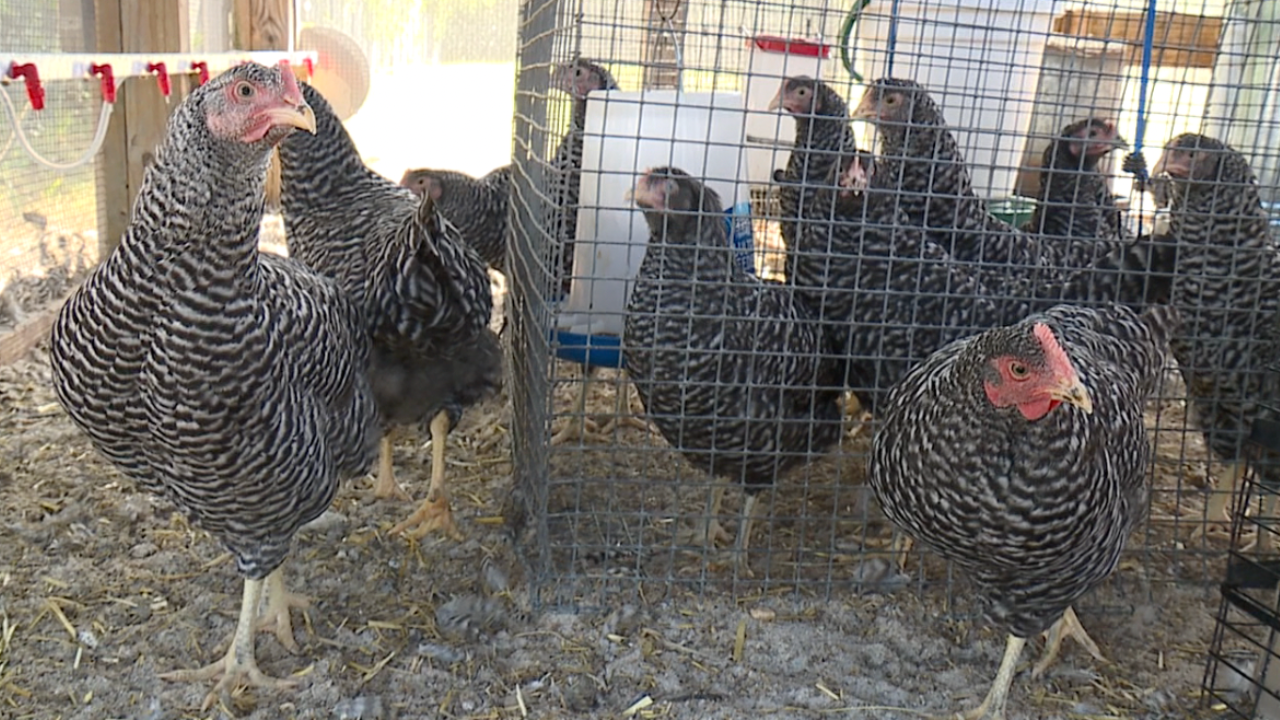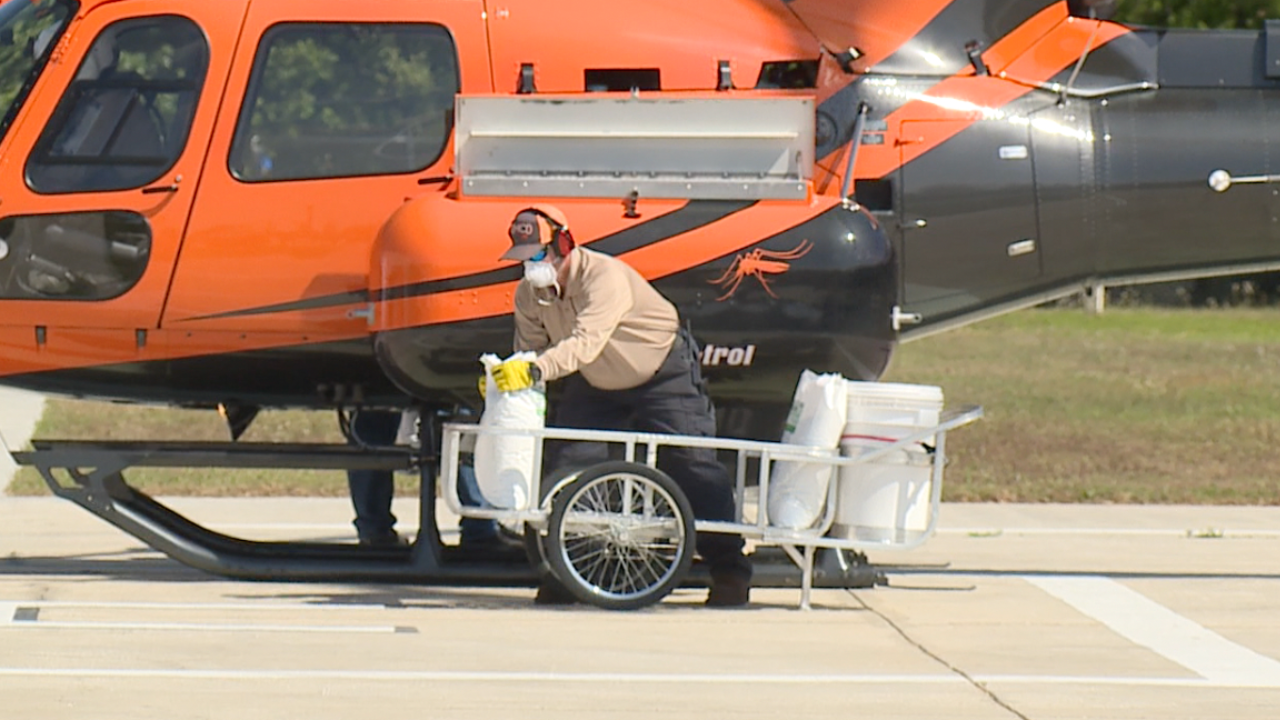ODESSA, Fla. — A room full of mosquitoes is usually a bad sign, but at the Pasco County Mosquito Control District, more mosquitoes in their lab means less in your yard.

"This is our insectary. We intentionally raise mosquitoes here for a variety of different reasons," said Executive Director Adriane Rogers.
In the lab, adult mosquitoes fly around numerous cages.
"We use the adults to monitor for resistance to the products that we're using. Each one of these has a different species of mosquito in it. And so we are looking at numerous mosquito species to ensure that the products that we're using are actually going to be effective at controlling them."
In a bowl of water, larvae swim.

"In here, we have mosquito larvae. These are commonly referred to as wigglers. So if you see these in anything growing in your yard, any water-holding containers. If you go ahead and just dump out that water, you will be controlling mosquitoes yourself in your own backyard," she said.
The research happening inside the small, warm lab is especially important right now. There are about 90 species of mosquitoes in Florida. In Pasco County, there are roughly 50 species. South Florida is abuzz with a new species of mosquito.
"We have very close relatives of that mosquito here in Pasco County. We have not yet identified Culex lactator. However, we are constantly monitoring for invasive species. And the reason for that is we're looking for potential for disease transmission."
There are about 12 species of mosquito that carry disease in Pasco County. One is the cousin of the new species found just south of us.
Studying mosquitoes is a job that only requires pesky biters. It also requires chickens.

Throughout the county, there are chicken coops. They're monitored by the PCMCD, taking blood samples to test for any exposure to diseases.
Once a chicken tests positive, it's retired. Many chickens live on private property. A retired chicken is allowed to remain on the property. Luckily for the owner, its food and eggs aren't impacted by exposure.
While exposure in chickens is one tool to figure out where problematic mosquitoes fly, traps are able to give an even better picture.
"With the passive traps, a collection of 100 or more is indication that we need to really hone in on that area. For one of the traps that are baited, such as this trap here, several thousand mosquitoes is really what we're looking at. And that's when we would move forward with additional control measures."
Traps are baited with carbon dioxide. Some can even count the number of mosquitoes flying inside, providing an opportunity to get data in real-time.
"Two of the things that we're looking for when we're performing surveillance for adult mosquitoes are the type of mosquito so that we can identify if it's a potential disease vector and also the relative abundance of the collection in the trap. That way, we can really focus our control efforts. And we know where to spend a lot of our resources in combating mosquitoes to knocking down that adult pressure."
Then there's the prevention side of things.
In the sky, a helicopter sprays solution aimed at killing larvae, primarily over hard-to-reach bodies of water like swamps and marshes.

The solution is sprayed over tree lines, falling into the water.
On the ground, trucks can make neighborhood visits as well as spray the tall grass near bodies of water.
Then there's the Argo, an amphibious ATV that goes from land to water. It's designed to coat plants in a herbicide. Those plants are home to about three species of mosquito that burrows into the plant. No plant means no home for the mosquitoes.
"We have a variety of different individuals on staff that really come together to comprise a very comprehensive, integrated mosquito management regime."
All of the work done is to ensure our journey outdoors is as pleasant and safe as possible.






